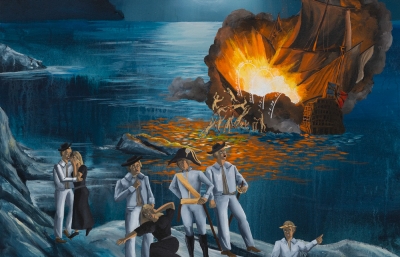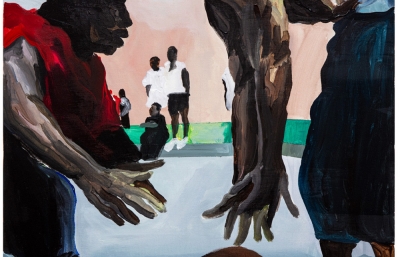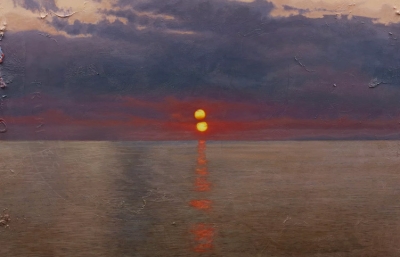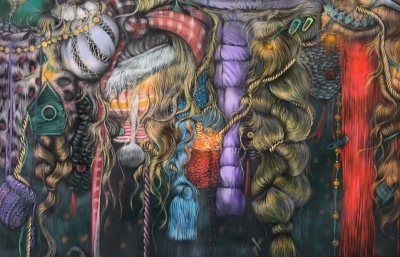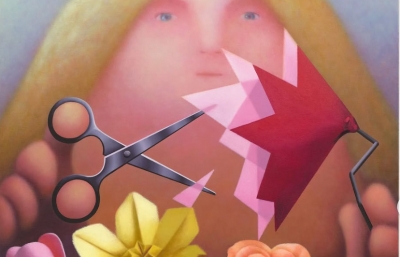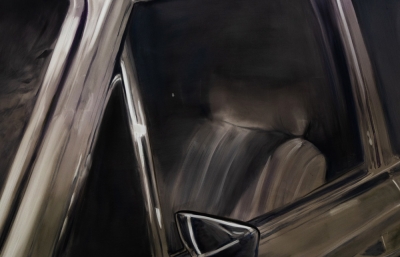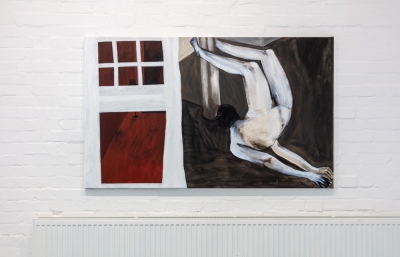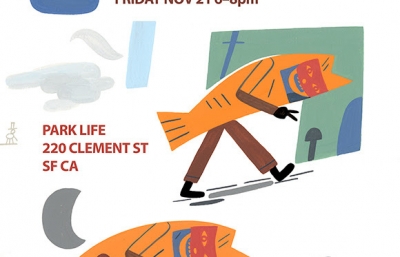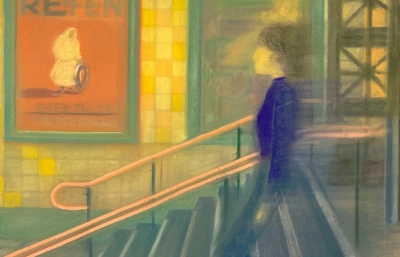Huxley-Parlour are delighted to announce a new exhibition of works by Catherine Repko. Duets, presented at our Swallow Street gallery, will showcase a suite of ten new large-scale paintings that focus on the interconnection of two figures. Existing at a threshold, the artist’s subjects are simultaneously tender and passive, as Repko weaves an ambiguity into her canvases through an abstraction of space.
The exhibition title - Duets - is suggestive of a synchronicity, a performance or melodic coupling, yet by definition can only be achieved through two separate individuals. This duality is a point of departure for Repko’s new body of work, exploring the boundaries of togetherness and divergence. In the greatest guide two figures fall in step, their outstretched hands echoing one another’s, as if beckoning an unseen presence, whereas in constellations a figure cloaked in inky blues turns away from their companion, the slight tilting of their head creating a pointed gesture to a shared tenderness.
There is a heightened restlessness to the subjects of this new body of work: fingers point, knees are bent in motion, torsos contort themselves. The animation of the figures lends the paintings a temporal quality; Repko captures her subjects in transition between that which has come before and that which lies ahead. Umbras cast outlines that envelop Repko’s figures, creating a liminality between subject and background. The artist’s formal experimentation extends the sense of fluidity: planes of colour oscillate between opacity and translucence offering an ambiguity of depth and perspective, between the tangible and the ephemeral; densely layered swathes of oil juxtapose more gestural, luminous mark-making.
The series is ruptured by amid the plains, offering a counterpoint with its single figure rendered against a shallow background of burnt yellows and earthy tones. Looking over her shoulder, she appears to engage with a spectral presence beyond the bounds of the canvas. The ambiguity of this caught moment destabilises a prescribed narrative and offers alternative realities, introducing the suggestion that the dyads are figments. The figures in Duets could be understood, in this context, as multiple versions of this one solo subject. Repko centres the psychology of her subjects, inviting an introspection and an exploration of the space between the figures and the abstracted world they inhabit. Duets examines a shared experience that exists within the slippages between connection and distance.





